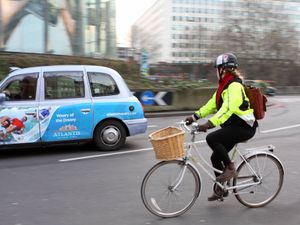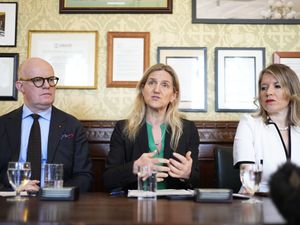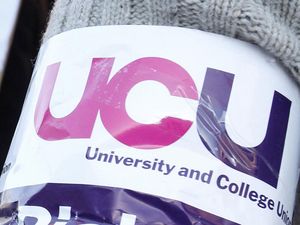Car safety tech has ‘blind spot’ for high-vis jackets, study suggests
Researchers conducted trials involving a crash test dummy and three cars travelling at 25mph.

High-visibility clothing and reflective strips may make pedestrians and cyclists invisible to modern car technology, a study suggests.
Automatic emergency braking (AEB) systems, which are fitted to all new cars, automatically apply the brakes if the potential for a collision is detected and the driver fails to respond quickly enough.
A study by the US-based Insurance Institute for Highway Safety indicated the systems may have a “blind spot” for reflective items.
Researchers conducted trials involving a crash test dummy and three cars travelling at 25mph: a Honda CR-V, Mazda CX-5 and Subaru Forester.
In the tests, the Honda and Mazda hit the dummy when it was wearing reflective strips, while the Honda also failed to slow down when a high-visibility jacket was put on the mannequin.
The Subaru slowed down in all tests except when the dummy was wearing reflective strips in very low light.
IIHS president David Harkey said: “These results suggest that some automakers need to tweak their pedestrian automatic emergency braking systems.
“It’s untenable that the clothes that pedestrians, cyclists and roadway workers wear to be safe may make them harder for crash avoidance technology to recognise.”
He added: “This is a worrisome blind spot.”
Study author David Kidd said: “The placement and motion of reflective strips on the joints and limbs of (trousers) and jackets allows drivers to quickly recognise the pattern of movement as a person.
“Unfortunately, the moving strips didn’t have the same effect for the pedestrian AEB systems we tested and probably confounded their sensors.”
Mazda said in a statement: “Road safety for everyone, including those in and around our vehicles, is a top priority for Mazda.
“Our engineers are continuously working to improve Mazda’s crash avoidance systems and are already using these latest IIHS results to further assist us in this work, with special consideration for nighttime pedestrian scenarios.”
Honda and Subaru were approached for a comment.





